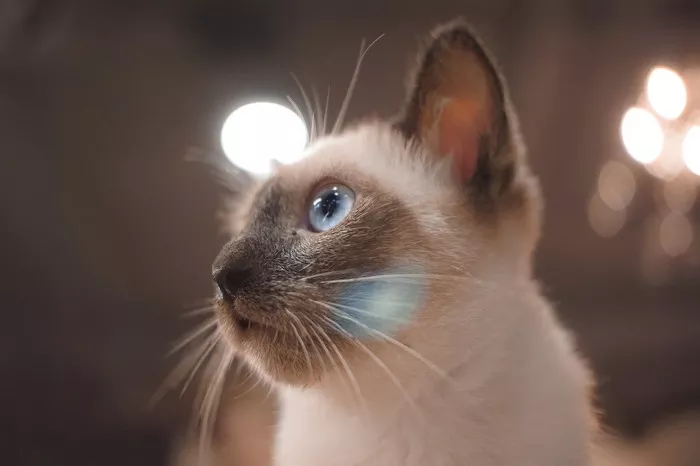Ragdoll cats are known for their striking appearance, gentle nature, and silky semi-long fur. As a Ragdoll cat owner, you may wonder if bathing is necessary for your feline companion. While cats are generally known for their self-grooming abilities, there are situations where bathing may be beneficial. This article aims to provide insights into whether you should bathe your Ragdoll cat, considerations to keep in mind, bathing frequency and techniques, and alternative grooming and maintenance options. By understanding the specific needs of your Ragdoll cat, you can make informed decisions regarding their grooming routine.
Understanding the Nature of Ragdoll Cats
Ragdoll cats are a breed known for their docile and sociable nature. They have a plush, semi-long coat with a soft texture, requiring regular grooming to keep it healthy and tangle-free. Ragdolls are generally considered to be a low-maintenance breed when it comes to grooming, thanks to their unique fur quality and natural grooming instincts. However, there are situations where bathing may be beneficial or necessary.
The Need for Bathing: Factors to Consider
Allergies or Sensitivities:
Some Ragdoll cats may develop skin allergies or sensitivities that can cause itching, redness, or discomfort. Bathing with hypoallergenic shampoos prescribed by a veterinarian can help alleviate these issues.
Environmental Factors:
If your Ragdoll cat spends time outdoors or in an environment that exposes them to dirt, allergens, or substances that may stick to their fur, bathing can help keep their coat clean and minimize potential irritants.
Medical Conditions:
Certain medical conditions, such as flea infestations, fungal or bacterial skin infections, or excessive oiliness, may require bathing as part of the treatment plan. Consult with a veterinarian to determine if bathing is necessary in such cases.
Show or Breeding Cats:
For Ragdolls participating in cat shows or breeding programs, regular bathing and grooming are often necessary to maintain their appearance and meet specific breed standards.
Individual Cat Preferences:
While most Ragdolls are known to dislike water and are proficient self-groomers, there may be exceptions. Some cats may show a tolerance for or even enjoy bathing. It is important to observe your cat’s behavior and comfort level around water before deciding to bathe them.
Bathing Frequency and Timing: Finding the Right Balance
Determining the frequency of bathing your Ragdoll cat depends on various factors, including their individual needs and lifestyle. In general, Ragdolls are low-maintenance when it comes to bathing. They have a natural ability to keep their coats clean through self-grooming, which involves licking and nibbling their fur. However, if specific circumstances require bathing, the following considerations may help guide you:
Regular Grooming:
Routine brushing and combing, preferably on a weekly basis, can help prevent matting, remove loose hair, and distribute natural oils, reducing the need for frequent bathing.
Environmental Factors:
If your Ragdoll cat frequently goes outdoors or comes into contact with substances that can soil their fur, you may need to bathe them more frequently. However, it is essential to strike a balance to avoid over-bathing, which can strip their coat of natural oils.
Allergies or Skin Conditions:
If your Ragdoll cat has allergies or skin conditions that require bathing, consult with a veterinarian for guidance on the appropriate bathing frequency and suitable products to use.
Show or Breeding Cats:
If your Ragdoll cat participates in cat shows or breeding programs, specific bathing protocols and frequencies may be necessary to maintain their coat’s appearance and meet breed standards. Consult with experienced breeders or show judges for guidance.
Bathing Techniques: Step-by-Step Guide for Bathing a Ragdoll Cat
Bathing a Ragdoll cat can be a challenging task due to their dislike of water. However, with patience, preparation, and proper techniques, it can be a manageable process. Here is a step-by-step guide for bathing your Ragdoll cat:
Prepare the Bathing Area:
Ensure the bathroom or designated bathing area is warm, draft-free, and has all the necessary supplies within reach, including cat-friendly shampoo, towels, and a non-slip mat or towel for the tub or sink.
Introduce Your Cat to Water Gradually:
Start by familiarizing your Ragdoll cat with water. Allow them to explore an empty bathtub or sink and reward them with treats or praise for positive associations.
Trim Nails and Brush Fur:
Before bathing, trim your cat’s nails to minimize the risk of scratches. Gently brush their fur to remove any tangles or loose hair.
Use Warm Water:
Fill the tub or sink with a few inches of lukewarm water. Ensure the water temperature is comfortable for your cat, testing it with your wrist or a thermometer.
Wetting and Shampooing:
Using a cup or handheld showerhead, wet your cat’s fur, avoiding the head area. Apply a small amount of cat-specific shampoo and gently lather it into their fur, focusing on areas that require cleaning.
Rinse Thoroughly:
Rinse your cat’s fur thoroughly, ensuring no shampoo residue remains. Use a gentle stream of warm water and cup your hand to protect their eyes and ears.
Towel Dry:
Gently lift your cat out of the water and wrap them in a warm, absorbent towel. Gently pat and blot their fur to remove excess water. Be cautious while drying their face, and avoid using a blow dryer, as the noise and air pressure may stress them.
Post-Bath Comfort:
After bathing, provide a warm and cozy environment for your cat to relax and dry off naturally. Ensure they have access to a quiet space and offer treats or affection to reinforce positive associations.
Bathing Alternatives: Exploring Grooming and Maintenance Options
If your Ragdoll cat strongly dislikes or becomes overly stressed during bathing, there are alternative grooming and maintenance options to consider:
Dry Shampoo:
Dry shampoos specifically formulated for cats can help freshen their coat without the need for water. These products can be sprayed or brushed onto the fur and then gently combed through.
Wipes and Towels:
Cat grooming wipes or damp towels can be used to spot clean your Ragdoll’s fur, focusing on areas that may require attention, such as the face, paws, or soiled areas.
Professional Grooming:
Engaging the services of a professional groomer experienced with Ragdoll cats can be a viable option. They can provide grooming services, including brushing, mat removal, and general maintenance, without the need for full baths.
Regular Brushing:
Maintaining a regular brushing routine is essential for Ragdoll cats. Regular brushing helps prevent matting, removes loose hair, and promotes a healthy coat. Use a high-quality brush or comb designed for long-haired cats.
Conclusion:
Deciding whether to bathe your Ragdoll cat depends on various factors, including their individual needs, environmental factors, and specific circumstances. While Ragdolls are generally low-maintenance when it comes to bathing, there may be situations where bathing is necessary or beneficial, such as addressing allergies, skin conditions, or show requirements. By understanding your Ragdoll cat’s specific needs, maintaining a regular grooming routine, and considering alternatives when appropriate, you can keep your feline companion’s coat healthy, clean, and comfortable. Remember to approach bathing with patience, care, and positive reinforcement to ensure a stress-free experience for both you and your beloved Ragdoll.


























